Themed collection Frontiers in Supramolecular and Macromolecular Science symposia

Frontiers of Macromolecular and Supramolecular Science symposia
Michael L. Klein and Virgil Percec introduce this Polymer Chemistry themed collection containing a selection of publications contributed by lecturers from the Frontiers of Macromolecular and Supramolecular Science symposia and friends of Christofor I. Simionescu.
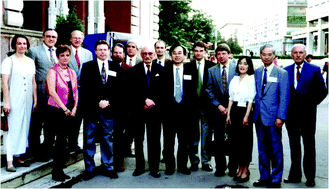
Polym. Chem., 2018,9, 2355-2358
https://doi.org/10.1039/C8PY90063A
Enzyme-driven biodegradable nanomotor based on tubular-shaped polymeric vesicles
Self-assembling a biodegradable nanomotor through the functionalization of tubular shaped polymersomes with catalase, showing enhanced diffusion in presence of fuel.
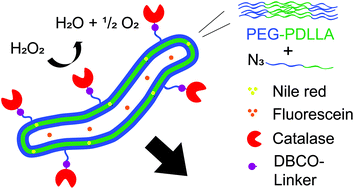
Polym. Chem., 2018,9, 3190-3194
https://doi.org/10.1039/C8PY00559A
Highly reactive α-bromoacrylate monomers and Michael acceptors obtained by Cu(II)Br2-dibromination of acrylates and instantaneous E2 by a ligand
The importance of the order of addition of reagents in SET-LRP.
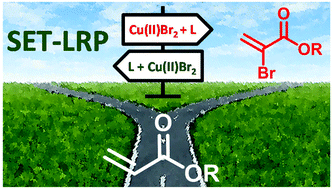
Polym. Chem., 2018,9, 2082-2086
https://doi.org/10.1039/C8PY00155C
Peptide–dendron hybrids that adopt sequence-encoded β-sheet conformations
Patterning of the amino acid residues to which dendrons are grafted encodes a β-sheet structure in peptide–dendron hybrids.
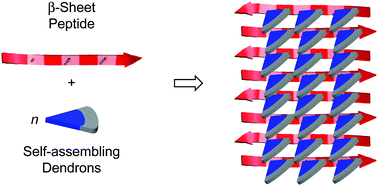
Polym. Chem., 2018,9, 4994-5001
https://doi.org/10.1039/C8PY00882E
ipso-Arylative polymerization as a route to π-conjugated polymers: synthesis of poly(3-hexylthiophene)
Palladium-catalyzed ipso-arylative polymerization of diphenylcarbinol-substituted thiophene derivatives proceeds to reasonably high molecular weights, but is limited by side reactions.
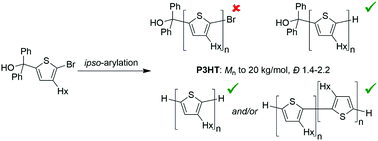
Polym. Chem., 2018,9, 3223-3231
https://doi.org/10.1039/C8PY00605A
The secondary structures of PEG-functionalized random copolymers derived from (R)- and (S)- families of alkyne polycarbodiimides
Macromolecular micelles: a hydrophobic polyamidine backbone surrounded by hydrophilic PEG chains.
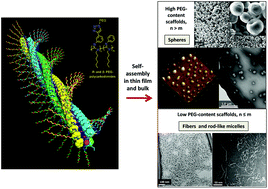
Polym. Chem., 2018,9, 2759-2768
https://doi.org/10.1039/C8PY00282G
Discrete oligodimethylsiloxane–oligomethylene di- and triblock co-oligomers: synthesis, self-assembly and molecular organisation
A new class of discrete-length block co-oligomers comprising oligodimethylsiloxane (oDMS) and oligomethylene (oM) is presented.
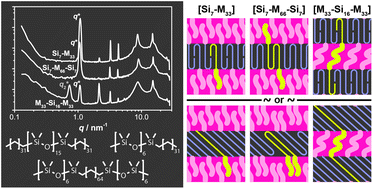
Polym. Chem., 2018,9, 2746-2758
https://doi.org/10.1039/C8PY00355F
Normal, ICAR and photomediated butadiene-ATRP with iron complexes
FeX2 or FeX3 (X = Cl ≫ Br) alone or with P ≫ X > O > N > C ligands and bromoester initiators enable the successful ATRP of butadiene in toluene at 110 °C.
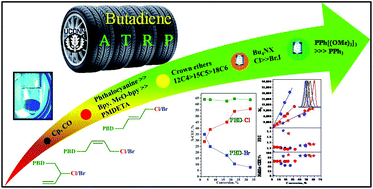
Polym. Chem., 2018,9, 2389-2406
https://doi.org/10.1039/C8PY00463C
Losing supramolecular orientational memory via self-organization of a misfolded secondary structure
Comparing the self-organization of two dendronized perylene bisimides reveals how structurally defective primary structure eliminates memory function via hierarchical self-organization.
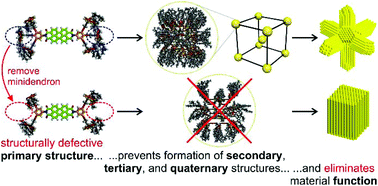
Polym. Chem., 2018,9, 2370-2381
https://doi.org/10.1039/C8PY00187A
Chitosan hydrogelation with a phenothiazine based aldehyde: a synthetic approach toward highly luminescent biomaterials
Hydrogelation of chitosan with a photoactive aldehyde via covalent dynamic chemistry proved an original approach towards efficient luminescent biomaterials.
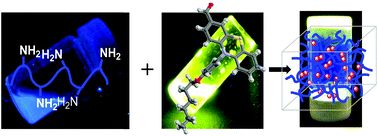
Polym. Chem., 2018,9, 2359-2369
https://doi.org/10.1039/C7PY01678F
Cu(0)-RDRP of methacrylates in DMSO: importance of the initiator
The controlled radical polymerization of methacrylates via Cu(0)-mediated RDRP is challenging in comparison to acrylates with most reports illustrating higher dispersities, lower monomer conversions and poorer end group fidelity relative to the acrylic analogues.
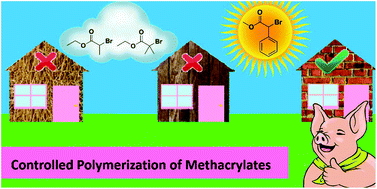
Polym. Chem., 2018,9, 2382-2388
https://doi.org/10.1039/C7PY01196B
SET-LRP in biphasic mixtures of fluorinated alcohols with water
Efficient and inexpensive SET-LRP in biphasic-mixtures of fluorinated alcohols with water.
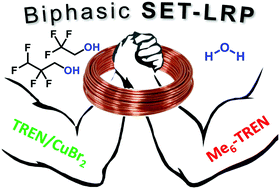
Polym. Chem., 2018,9, 2313-2327
https://doi.org/10.1039/C8PY00062J
Acrylate-macromonomers and telechelics of PBA by merging biphasic SET-LRP of BA, chain extension with MA and biphasic esterification
Chain extension of PBA with MA allows the preparation of acrylate-functional PBA.
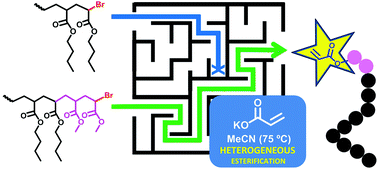
Polym. Chem., 2018,9, 1961-1971
https://doi.org/10.1039/C8PY00156A
Macromonomers, telechelics and more complex architectures of PMA by a combination of biphasic SET-LRP and biphasic esterification
Macromonomers and telechelics of PMA via biphasic SET-LRP and biphasic esterification with potassium acrylate.
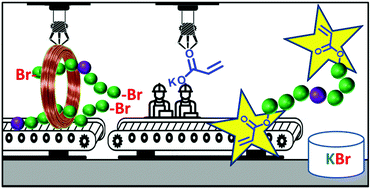
Polym. Chem., 2018,9, 1885-1899
https://doi.org/10.1039/C8PY00150B
Squalene/polyethylenimine based non-viral vectors: synthesis and use in systems for sustained gene release
New squalene/BPEI conjugates, acting as efficient gene carriers, were included in the 3D matrix, yielding tunable DNA release and long-term bioavailability.

Polym. Chem., 2018,9, 1072-1081
https://doi.org/10.1039/C7PY01720K
Novel cyclodextrin-based pH-sensitive supramolecular host–guest assembly for staining acidic cellular organelles
A novel supramolecular approach for the preparation of new non-toxic systems for staining cellular organelles is described.
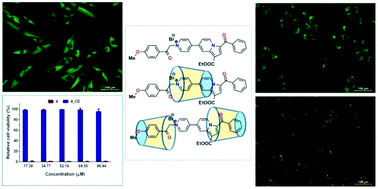
Polym. Chem., 2018,9, 968-975
https://doi.org/10.1039/C7PY01668A
Selective oxidation of cellulose, mediated by N-hydroxyphthalimide, under a metal-free environment
The generation of the phthalimide-N-oxyl (PINO) free radical from its N-hydroxylphthalimide (NHPI) precursor under a metal free environment, to selectively oxidize the primary OH groups in cellulose is reported.
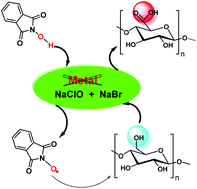
Polym. Chem., 2018,9, 961-967
https://doi.org/10.1039/C7PY01710C
Ferromagnetic iron oxide–cellulose nanocomposites prepared by ultrasonication
Uniformly dispersed iron oxide–cellulose ferromagnetic nanocomposites were successfully obtained by ultrasonication, as a clean and energy-saving method.
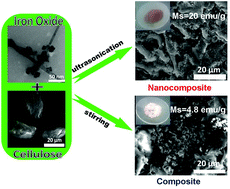
Polym. Chem., 2018,9, 860-868
https://doi.org/10.1039/C7PY01587A
Multivalent polyrotaxane vectors as adaptive cargo complexes for gene therapy
The philosophy to design and construct polyrotaxane carriers, as efficient gene delivery systems.
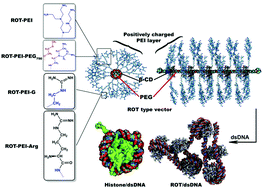
Polym. Chem., 2018,9, 845-859
https://doi.org/10.1039/C7PY01256J